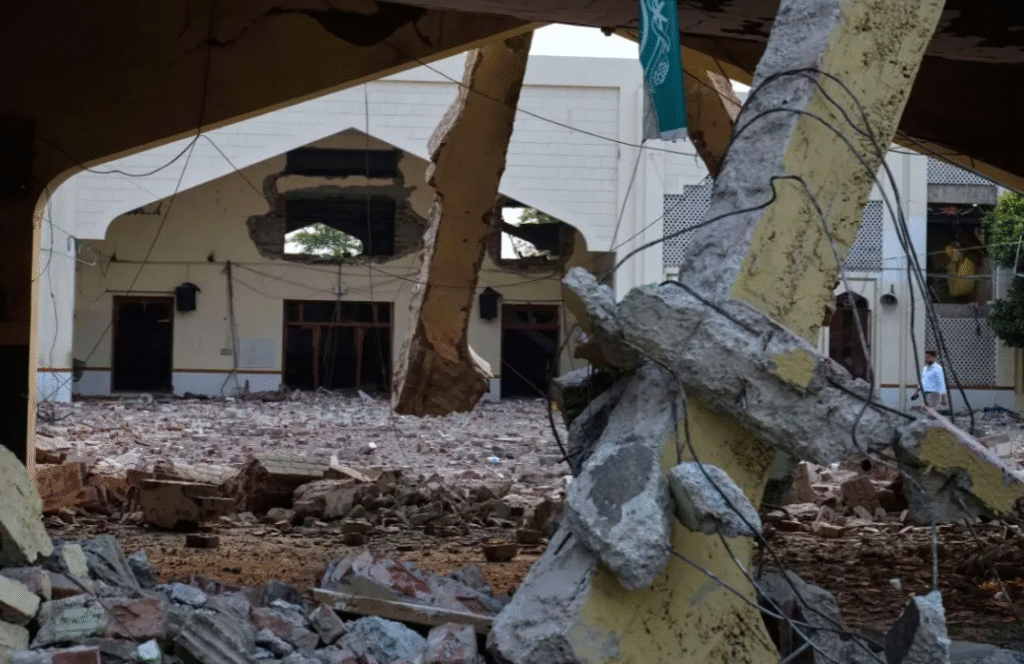Satellite Images Reveal Pakistan Navy’s Defensive Posture During Operation Sindoor
New Delhi: Commercial satellite imagery analysed by India Today’s OSINT team shows that during the peak of Operation Sindoor, Pakistan Navy (PN) warships abandoned their Karachi dockyard, shifting instead to commercial berths and the western port of Gwadar, close to the Iranian border.
On the night of May 6–7, Indian forces struck nine terror-linked sites across Pakistan and Pakistan-occupied Jammu & Kashmir (PoJK). Shortly after, New Delhi conveyed to Islamabad’s Director General of Military Operations (DGMO) that its mission was complete. Pakistan’s leadership responded with threats of retaliation — yet satellite images tell a different story, pointing to a defensive naval posture.

Karachi Dockyard Emptied
Satellite visuals from May 8 show Karachi’s naval dockyard unusually empty, with frontline warships berthed at commercial cargo terminals. At least four PN vessels — including PNS Alamgir, a Babur-class corvette, and a Damen Offshore Patrol Vessel — were docked metres away from civilian cargo ships and container stacks.
Vice Admiral SC Suresh Bangara (Retd.), who commanded naval operations during the 1971 Karachi attack, questioned PN’s preparedness:
“Given that the strikes occurred on May 7, all three arms of Pakistan’s forces should have been on full alert. To see frontline warships still in harbour reflects poor operational readiness.”
He added that berthing warships in civilian terminals suggested Pakistan was seeking cover against missile strikes — a tactic mirrored by its practice of flying military aircraft alongside commercial flights.
Gwadar Becomes a Refuge
Further west, Gwadar — promoted as the flagship port of the China-Pakistan Economic Corridor — was transformed into a temporary naval refuge. By May 10, imagery showed container yards standing empty while docks brimmed with warships: two Zulfiquar-class frigates, two Tughril-class frigates, Pakistan’s sole US-built Oliver Hazard Perry-class frigate, and two patrol vessels.
“Gwadar, with little commercial activity, was the wrong place to hide frontline assets. The ships stood out prominently. The only real force at sea appeared to be their submarines,” Bangara observed.
This dispersal came despite Pakistan showcasing its so-called deterrent just six months earlier — the P282 ship-launched ballistic missile, test-fired from a Chinese-built Zulfiquar-class frigate and touted for its precision.
Indian Pressure in the Arabian Sea
Analysts note that Pakistan’s retreat coincided with India’s assertive naval presence. According to Damien Symon of the Intel Lab, INS Vikrant — India’s first indigenous aircraft carrier — undertook its maiden combat deployment during Operation Sindoor, with its movements across the Arabian Sea openly tracked.
“Pakistan appeared to preemptively disperse its fleet to civilian berths and Gwadar in anticipation of escalation,” Symon said.
At the same time, Pakistan’s submarine fleet was under strain, with several boats sidelined for refits — weakening its undersea deterrence.

“Operation Sindoor is Only Paused”
Vice Admiral Bangara stressed that India’s integrated tri-service planning proved decisive:
“India executed a classic joint operation, achieving objectives without firing a single naval missile. Operation Sindoor has only been paused.”
India’s Navy, he noted, was prepared to strike Karachi if required. Vice Admiral A.N. Pramod confirmed in May 2025 that Indian forces had remained forward deployed, ready to hit both sea and land targets at a time of New Delhi’s choosing.
The satellite evidence underscores how, under mounting pressure, Pakistan’s navy scattered and sought refuge — a defensive stance starkly at odds with its earlier rhetoric of retaliation.










